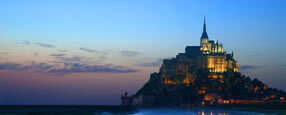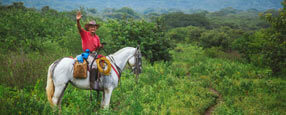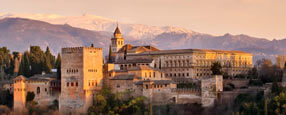CALL US: 1.800.665.3998
The Colour of India
Owing to its multitude and diversity of religions, customs, languages and terrain, India is often regarded as more of a continent within itself, rather than just a country. Its long history of intermingling with other cultures, and of often incorporating aspects of them into its own, is very much evident in the India of today and a tour to the country is a tour into several vast and widely-different societies, all co-existing and interacting within one set of expansive borders.
Duration: 13 days
Starts: Delhi
Ends: Delhi
Highlights:
For pdf as printable itinerary: Click here
Starts: Delhi
Ends: Delhi
Highlights:
Delhi, Jaipur, Ranthambore, Bharaptur, Agra, Jhansi, Khajuraho, Kanha National Park
For pdf as printable itinerary: Click here
ITINERARY IN BRIEF
Day 1: Arrive in Delhi
Arrive Delhi. After you have completed immigration and customs formalities, you are met by our representative outside the Arrivals Hall and transferred to your hotel for the night.
Day 2: Delhi
After breakfast, depart for a tour of India's capital. In Old Delhi, drive past the Red Fort, built in 1648 during the reign of Shah Jehan in red sandstone, which gave the fort its name and Jama Masjid, India's largest mosque, built of red sandstone and white marble in the middle of the 17th century. There is time to wander down Chandni Chowk (Silver Street), once the imperial avenue down which Shah Jehan rode at the head of lavish cavalcades, today bustling with shops, stalls and silversmiths' ateliers. In New Delhi, drive past India Gate, built in memory of Indian soldiers killed during the First World War, Rashtrapati Bhawan, built in the early 20th century as the Imperial residence of the Viceroy, today the official residence of the President of India, and the Parliament House, a unique circular building with huge colonnades, which houses the Upper and Lower Houses of Parliament. Visit Humayun's Tomb, the first Mughal garden tomb. Visitors are immediately struck by the tomb's resemblance to its more famous cousinthe Taj Mahalwith its four grand gateways, octagonal base-plan, soaring niche-shaped arches, lofty double domes and symmetrical garden with its central canal. The garden and the interconnecting water channels have recently been restored to recreate and preserve their original beauty. One of Delhi's most striking monuments is the 70-metre-high Qutub Minar, which looms majestically across the wide plains of Delhi. It was built during the 12th-century Delhi Sultanate period and commemorates the conquest of Delhi by Qutb-ud-din Aibak, the slave and chief general of Mohammad Ghuri.
Day 3: Drive Delhi to Jaipur
After a leisurely breakfast, drive to Jaipur. Popularly known as "the Pink City," it was founded in 1727 AD by one of the greatest rulers of the Kachhawaha Dynastythe astronomer King Sawai Jai Singh. It is the capital of the colourful state of Rajasthan and a jewel which forms one point of the golden triangle. On arrival, check in at your hotel. In the afternoon, visit the City Palace, the former residence of the royal family, a part of which is converted into a museum. Built in the style of a fortified campus, the palace covers almost one-seventh in area of the Old City. One of the major attractions in the museum is the Armoury Museum, housing an impressive array of weaponry. Also visit Jantar Mantar, which is the largest stone and marble crafted observatory in the world. The observatory has 17 large instruments, many of them still in working condition.
Day 4: In Jaipur
After breakfast visit Amber, the capital for six centuries before Jaipur was built, which lies 11 km north of Jaipur. Rising majestically on the slopes of a hill, this 11th-century fort and palace complex is a blend of Hindu and Muslim stylesthe earlier constructions in the inner apartments designed by the Hindu founder are austere, while later constructions abound in the rich flourishes characteristic of Muslim influence. Experience the thrill of riding up to the fort on decorated elephants, in the manner the Rajputs of old made their royal ascent centuries ago. The afternoon is at leisure. There is time to wander through the colourful bazaars, a veritable collector's paradise where you can watch ancient craft forms: Meenakari or enamelling work, exquisite jewellery in silver or gold sparkling with emeralds, rubies, white sapphires and dangling pearls. In tiny ateliers, you can see the age-old tie-dye methods of cloth printing, miniature paintings on cotton or silk, statues hand-carved in wood or bone, fine metalwork and the renowned blue pottery of Jaipur.
Day 5: Drive Jaipur to Ranthambore
After breakfast, depart on the drive to Ranthambore National Park, situated in the Aravalli and Vindhya ranges. The blend between nature and history is strong in this parkthe fort, temples, tanks and other relics are a constant reminder of man's involvement in the area. The fort commanded a large region and up to the late 13th century was the centre of a Hindu kingdom. During the 18th century, the area was protected as a hunting area for and by the Maharajas of Jaipur and it is thanks to an extension of this protection that the park exists today. On arrival, check in at the wildlife resort. In the late afternoon, take a game-viewing safari in the park.
Day 6: At Ranthambore
Early-morning and late-afternoon game-viewing safaris in the park. Ranthambore has an impressive range of animal species within its 392 sq. km, including sambar, cheetal deer, nilgai (blue bull), chinkara, wild boar, sloth bear, hyena, jackal, leopard and the highly endangered Royal Bengal Tiger. During the day, you could go for a bird-watching walk in the park periphery. The rich bird life reflects the range of flora on which it feeds. During the winter months, the lakes attract a variety of migrant water birds. Due to its varied terrain and abundance of water bodies, Ranthambore has an excellent population of birds, resident and migrant. A total of 272 species have been documented. Some of the best locations for bird watching are Malik Talao, Padam Talao and in the Jhalra area.
Day 7: Drive Ranthambore to Agra via Bharatpur (298 KM/6 HRS)
After an early breakfast, depart on the drive to Agra. OPTION: En route, you could stop at Bharatpur Bird Sanctuary. Spread over 29 square km of shallow lakes, scrub and woodland, it was initially developed in the late 19th century as a wildfowl hunting preserve by the royal family of Bharatpur. Today, it is one of the most spectacular waterfowl sanctuaries in the world. Among the variety of water and other birds that gather here are the painted stork, egret, pelican, ibis, cormorant, darter, grey and white heron, sarus crane and purple moorhen. You are met upon arrival and assisted with checking in at your hotel. Later in the afternoon, visit the Agra Fort, a World Heritage site. Built of red sandstone, the fort stands like a crescent on the banks of the Jamuna River, enclosed by forbidding 20-metre-high walls, with a 12-metre moat between them. Three successive Mughal emperorsAkbar, Jehangir and Shah Jehanhelped create this massive structure which contains both Hindu and Muslim architecture. The palace is a notable for its smooth blending of Hindu and central Asian architectural styles. The highlight of your trip will be a late afternoon visit to the Taj Mahal, the greatest monument to love and one of the Wonders of the Modern World, constructed by Emperor Shah Jehan as a mausoleum for his beloved queen Mumtaz Mahal. Completed in 1652, skilled craftsmen from Persia, Turkey, France and Italy and some 20,000 labourers worked for 17 years to build this edifice, Marble was brought from Makrana, near Jodhpur and precious stones of onyx, amethyst, malachite, lapis lazuli, turquoise, jade, crystal and mother of pearl were carried from Persia, Russia, Afghanistan, Tibet and China.
Day 8: Train Agra to Jhansi, drive to Khajuraho via Orchha
Check out of the hotel early in the morning and return to the Taj Mahal, to watch the rays of the rising sun bathe this pristine white building in hues of yellow, ochre, orange and flame. Continue on to the Railway Station to board the Shatabdi Express train to Jhansi. On arrival in Jhansi, you are met at the railway station and transferred to Orchha, 30 minutes away. Founded in the 16th century by the Bundela king Rudhra Pratap, on the banks of the Betwa River, Orchha, is a mediaeval city frozen in time and space, existing even today as it must have done in the 16th and 17th centuries, when it was built. The countryside undulates gently between plains and rolling forest-clad hills and the landscape is dotted with palaces and temples, a fortress and cenotaphs. The architecture is a synthesis of traditional Hindu, hybrid Indo-Saracenic and ornate Mughal. One of the finest sights is the view of the cenotaphs from across the Betwa River. Visit the Jehangir Mahal, the most grandiose structure in Orchha: the Raja Mahal, another monument of historical importance and the Rai Praveen Mahal. With their rich historical background, these places hold great value for the legacy of Orchha. Continue on to Khajuraho, which is renowned the world over for its fine temples. On arrival check in at the hotel. Later in the afternoon, visit the temples. Built between 950 and 1050 AD, they are among the most creative examples of Indian architecture. Only 22 of the original 85 temples survive today. The most popular theme is woman: reflective, playful, amorous. The carvings also depict gods in cosmic evolution, griffins, nymphs, beasts, demons in revolt and the several emotions of manfear, doubt, jealousy, ardent love and consummate passion.
Day 9: Drive Khajuraho to Bandhavgarh
After breakfast, drive to Bandhavgarh National Park. On arrival, check in at the jungle lodge. In the late afternoon take a jeep ride in the park to view some of the game found here: cheetal, sambar, barking deer, chowsingha (four-horned antelope), wild boar, nilgai, wild boar, grey langur, Rhesus macaque, dhole (Asian wild dog) and a variety of birds. In the evening, before dinner, there is a slide show or lecture on the park and its flora and fauna, with resident naturalists always on hand to answer any queries you may have.
Day 10: At Bandhavgarh
Early morning and late afternoon jeep safaris in the Park in search of the Royal Bengal Tiger and other game. With a road network of over 200 km, it is possible to cover every habitat type. Bandhavgarh is renowned for the relatively easy sighting of tiger, especially by daylight. You can also visit some the ancient monuments found here, including a huge 35-foot status of Vishnu, reclining on a bed of serpents. Lunch and dinner at the jungle lodge.
Day 11: Drive Bandhavgarh to Kanha
After an early breakfast, depart on the drive to Kanha National Park. On arrival, check in at the jungle lodge by lunchtime. The afternoon is at leisure to relax at the lodge or go for a birdwatching walk with one of the resident naturalists. Dinner at the jungle lodge.
Day 12: At Kanha
Early-morning and late-afternoon game-viewing drives in the park. Considered by some to be India's greatest national park, the area is certainly an excellent place to see many species in their natural habitat. First declared as a small sanctuary in 1933, it was upgraded to a national park in 1955. One of India's great conservation success stories is from Kanha, where the barasingha (swamp deer) population was increased from about 66 in the late 1960s to over 450 by 1985. The terrain consists of attractive forest with bamboo brakes, grassy plateaux and meadows in the valleys. The varied habitat is also home to the gaur (largest of the world's cattle), sambar (the largest of the Indian deer), chowsingha (the only four-horned antelope in the world), Nilgai (blue bull), sloth bear, leopard, the elusive and highly endangered Royal Bengal Tiger and a wide variety of birds. Lunch and dinner at the jungle lodge.
Day 13: Drive Kanha to Jabalpur, fly to Delhi and depart
After a leisurely breakfast, relax at the lodge. After an early lunch, depart on the drive to Jabalpur airport in time to board the evening flight to Delhi. Connect to your flight back home.
LOOKING FOR INSPIRATION?







